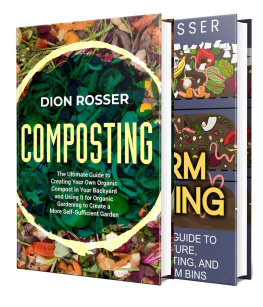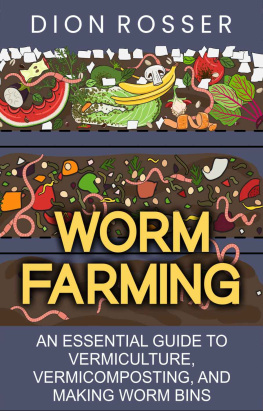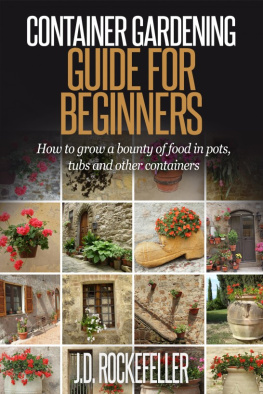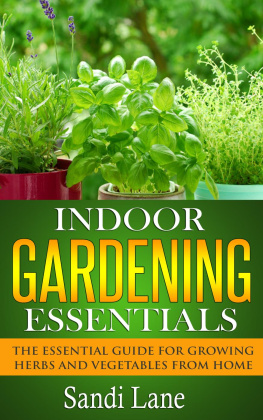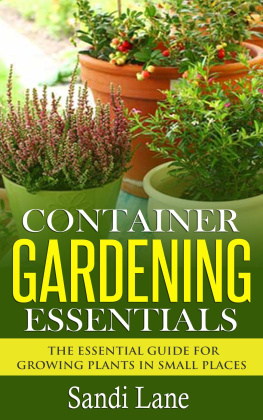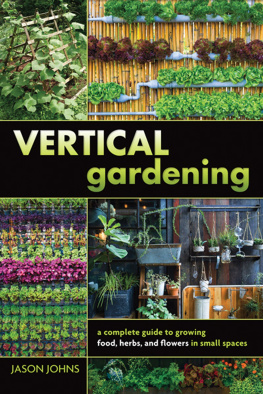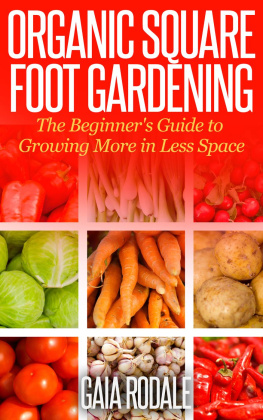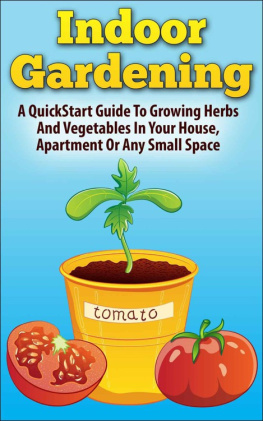Indoor Gardening
How You Can Grow Vegetables, Herbs, Flowers, and Fruits Along with Tips for Beginners Wanting to Build a Container Garden Indoors
Copyright 2021
The contents of this book may not be reproduced, duplicated, or transmitted without direct written permission from the author.
Under no circumstances will any legal responsibility or blame be held against the publisher for any reparation, damages, or monetary loss due to the information herein, either directly or indirectly.
Legal Notice:
You cannot amend, distribute, sell, use, quote, or paraphrase any part or the content within this book without the consent of the author.
Disclaimer Notice:
Please note the information contained within this document is for educational and entertainment purposes only. No warranties of any kind are expressed or implied. Readers acknowledge that the author is not engaging in the rendering of legal, financial, medical, or professional advice. Please consult a licensed professional before attempting any techniques outlined in this book.
By reading this document, the reader agrees that under no circumstances is the author responsible for any losses, direct or indirect, which are incurred as a result of the use of the information contained within this document, including, but not limited to, errors, omissions, or inaccuracies.
Table of Contents
Introduction
Indoor gardening is best described as the act of growing plants indoors. It is innovative because it solves many homeowners and apartment dwellers who lack natural space for gardening.
The point of indoor gardening is to create a pseudo gardening environment where you can grow flowers, herbs, vegetables, and even food. Whether you are a gardener seeking fresh produce during winter or someone who has no land to garden on, indoor gardening can be right for you.
This book covers the fundamentals of indoor gardening. From the first to the last chapter, you are offered in-depth information on indoor plants. The first chapter informs you about the compelling reasons you need to build your indoor garden now.
The subsequent chapters explain the types and systems of indoor gardening, the cost of supplies, and the essentials you need before you plant your favorite vegetables, fruits, flowers, and herbs. Then, more information is provided on the best types of indoor plants to have in your indoor gardening and the process involved in caring for and maintaining the garden.
Overall, this book offers comprehensive information on gardening, whether you are a newbie or already familiar with some aspects. By the end of the book, you will be equipped with enough knowledge to start a home garden inside your apartment.
Start reading to unravel the fundamentals of indoor gardening and indoor plants!
Chapter One: Why You Should Start Gardening Indoors
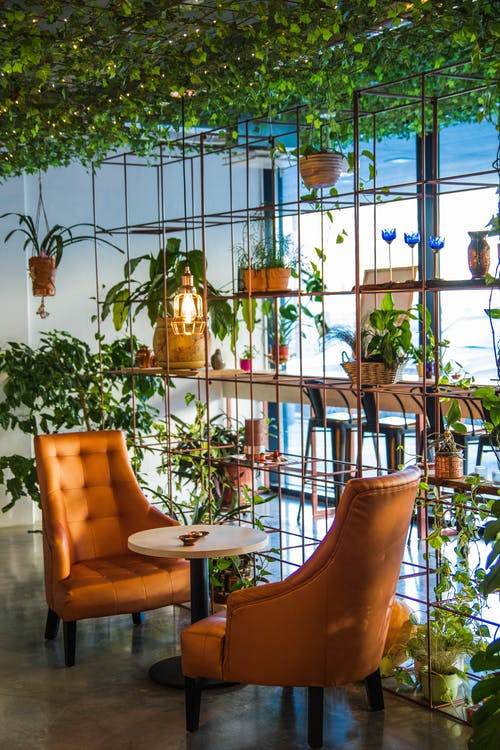
Gardening is one of the main components of homesteading. Yet, many people avoid it because of the many challenges of starting an outdoor garden. Fortunately, there is the option of growing plants indoors. You can explore this option whether you are a would-be homesteader or an established member of the self-sufficient community.
It is normal to be hesitant about indoor gardening, especially if you are a newbie. Some people are less inclined to try it because they are unaware of the benefits. Plus, they may be afraid to try something new.
But it does not matter once you realize the benefits of indoor gardening. You will be more motivated to give it a chance.
This chapter aims to convince you of the need to start an indoor garden in your home and the benefits of indoor gardening. It will also explain the health benefits of indoor plants. By its end, you should be more excited than ever to start your indoor garden.
There are many reasons why you should consider growing plants inside your home. Everyone has personal reasons to start indoor gardening. Some people start it merely for fun. Others want one because the plants spruce their homes up. However, there are more significant benefits of starting an indoor garden.
Access to fresh produce is one of the most important motivators for indoor gardening. When you have your fruit, vegetable, and herb garden, there is always access to fresh produce. Many gardeners enjoy growing crops indoors because they control the seasons that way.
To have fresh fruits year-round, you only have to plan around the seasons before starting a new crop. There is nothing like "My crops aren't ready for harvest." You can use grow lights, heaters, irrigation, humidifier, etc., whenever you want fruits out of season. These will help provide the right environment for growing fruits.
Herbs are probably the most convenient to grow. You can put them in your kitchen, right next to the window where they can get lots of sunlight, and you can access them for immediate use. What gives a more wonderful feeling than snipping a few chives to mix in with your salad?
A significant benefit of indoor gardening is that it gives you control over the weather. There is no possibility of a violent wind, cold snap, or overly hot weather distressing or killing your plants.
Of course, there are varieties of hardy plants designed to withstand tough climates. But if you plan to grow more tender species, putting them inside your home will improve their chances of thriving and surviving.
Also, growing your plants indoors allows you to customize the whole gardening environment. You can choose how close to the window the plants are, whether they have drafts or supplement natural light with grow lights.
Infestation is another unpredictable element of outdoor gardening, but you can avoid it by establishing your garden inside. Naturally, you might see a couple of mealy bugs, spider mites, scales, and other nasty pests in your indoor garden. But the possibility of an infestation is much lower than when your plants are outside.
The key to avoiding infestation is to thoroughly check for would-be pests and interlopers before bringing new plants home. You can even keep them in quarantine for a few days to ensure they are healthy and safe enough to join your indoor garden. And indoor plants are easier to monitor, meaning you can stop any infestation in its root.
Unlike outdoor plants, indoor plants are protected from mice, rabbits, neighborhood cats, deer, and other animals that enjoy sneaking into outdoor gardens to feast. So, that's an added benefit for indoor gardeners.
Indoor gardening extends your growing season. Even if you enjoy grooming and tending to your plants in open light, growing them inside first provides an advantage. For instance, it allows you to give seedlings and bulbs a head start on the season.
You can start them indoors weeks before the final frost in your region. When it's time to move them outside, simply toughen them up by gradually introducing them to outdoor elements. For example, you can place them in a partially shady spot on your patio.
After the regular growing season, you can bring the plants back inside and keep them growing. But remember that moving them back inside the house can shock their systems. So, once again, allow them a transition period in a sheltered spot around your home.
Air purification is another reason why you might be motivated to start an indoor garden. Plants fuel their growth by creating chemical energy through photosynthesis, a process in which water and carbon dioxide convert to glucose.
During the process, they also release oxygen; plants take in carbon dioxide and produce oxygen. That is the opposite of how humans breathe by taking in oxygen and releasing carbon dioxide.


